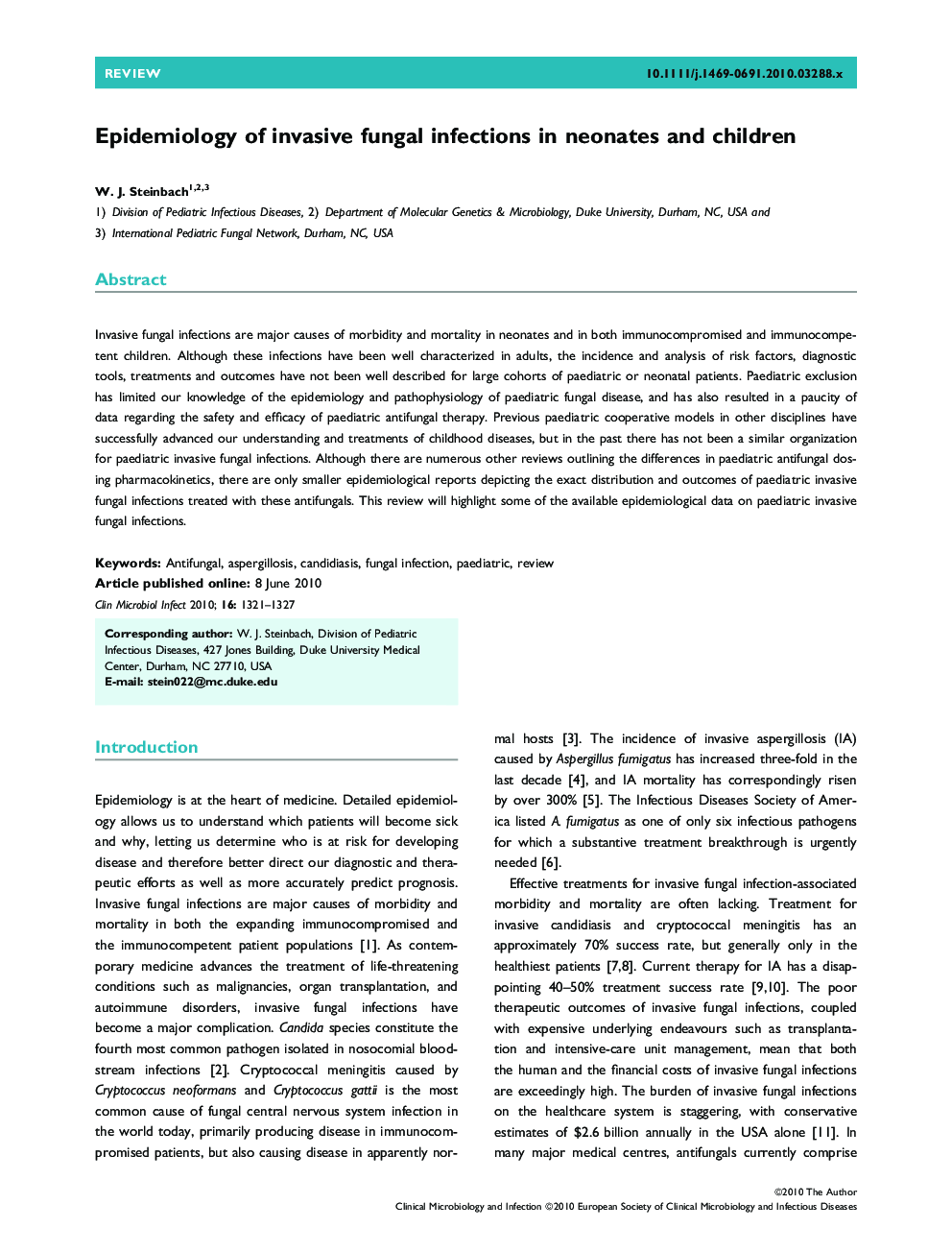| Article ID | Journal | Published Year | Pages | File Type |
|---|---|---|---|---|
| 6131177 | Clinical Microbiology and Infection | 2010 | 7 Pages |
Abstract
Invasive fungal infections are major causes of morbidity and mortality in neonates and in both immunocompromised and immunocompetent children. Although these infections have been well characterized in adults, the incidence and analysis of risk factors, diagnostic tools, treatments and outcomes have not been well described for large cohorts of paediatric or neonatal patients. Paediatric exclusion has limited our knowledge of the epidemiology and pathophysiology of paediatric fungal disease, and has also resulted in a paucity of data regarding the safety and efficacy of paediatric antifungal therapy. Previous paediatric cooperative models in other disciplines have successfully advanced our understanding and treatments of childhood diseases, but in the past there has not been a similar organization for paediatric invasive fungal infections. Although there are numerous other reviews outlining the differences in paediatric antifungal dosing pharmacokinetics, there are only smaller epidemiological reports depicting the exact distribution and outcomes of paediatric invasive fungal infections treated with these antifungals. This review will highlight some of the available epidemiological data on paediatric invasive fungal infections.
Related Topics
Life Sciences
Immunology and Microbiology
Microbiology
Authors
W.J. Steinbach,
